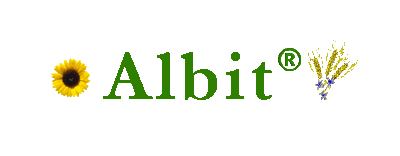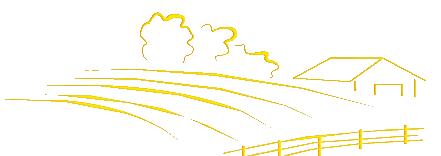|
|
Materials used in this chapter were published in book Zlotnikov A.K. Biopreparation Albit for yield increase and agricultural crop protection / A.K. Zlotnikov // E.A. Melkumova (Ed). – 2006. – Podol’sk. All-Russia Research Institute of Plant Protection of Agricultural Ministry of Russian Federation. – 327 p. (In Russian) On flowers of open ground and in greenhouses, Albit is applied as growth regulator and antidote for reducing of phytotoxic effect of pesticides. Also, Albit activates growth and development, increases resistance to unfavorable environmental conditions, increases resistance to diseases, elongates period of flowering, improves decorative qualities of flowers. Albit induces blossoming of flowers of open ground and in greenhouses, accelerates efflorescence, and also promotes more coherent flowering, increases the number of flowers per plant. Albit accelerates efflorescence by 3–15 days, elongates the period of flowering by 4-35 days (up to 1.5-2.5 times), improves decorative quality of flowers, increases commercial yield of flower production of the first and superior classes by 10-15% and resistance to diseases. After Albit treatment, brighter and saturated coloring of leaves and flowers are observed because of increased synthesis of chlorophyll and antioxidants in plant cells. These effects of Albit are observed for many flowers: roses, gladioluses, carnations, cyclamens, Kafir lily, amaryllis, violets, primula and others, and confirmed by Expert Conclusion of Pryanishnikov All-Russian Institute of Agrochemistry. Here are two other examples of beneficial influence of Albit on flowers:
Application of Albit on hothouse orchids Dendrobium sonia growing on substrate composed of coconut and cellulose was first conducted in Vietnam (greenhouse complex in Ho Chi Minh, province Binh Duong, 2014). Plants were sprayed with Albit (in dose 1 mL/10 L of water (400 L/hà)) from the moment of efflorescence of flowers during 4 weeks (one time per week). Foliar spraying in the control was conducted only with applying of standard foliar fertilizer. After foliar spraying with Albit, orchid flowed faster and more uniformly, had more elongated floral branches, thicker and juicy petals of flowers with coloring brighter than in control (Figs. 1, 2). These parameters are important for export of flowers.
Fig. 1. Left: orchids Dendrobium sonia, treated with standard foliar fertilizer. Flowering is irregular. Right: orchids Dendrobium sonia, treated with Albit. Flowering is abundant and more uniform.
Fig. 2. Influence of Albit on flowering of orchids
Dendrobium
sonia: Growing and stimulating efficacy of Albit was revealed on seedlings of petunia in Spain (Malaga, 2016). After of planting (10 days), pottery petunia was treated with Albit (1 mL/10 L, foliar spraying) and after 2 weeks treated plants differed from the control plants: they had more green leaves and looked healthy (Fig. 3).
Fig. 3. Influence of Albit on seedlings of petunia (Malaga, Spain, 2016) Also Albit has a protective effect against some diseases of flowers. Trials of Ecuadorian company Agrosa Yaruqui on roses (2015) revealed that biological efficiency of Albit against downy mildew (agent Peronospora) and powdery mildew (agent Sphaerothecà) was 26.6–28% and 13–77%, respectively (Fig. 4). Plants were sprayed with Albit (110 mL/hà) in tank mix with fungicide from 44th to 48th weeks, 1 time per week.
Fig. 4. Influence of Albit on the dynamics of powdery mildew (Sphaerotheca) disease development on roses var. Bride (greenhouse complex Agrosa Yaruqui, Ecuador, 2015) In the same trial on gerbera, biological efficiency of Albit against powdery mildew (agent Erysiphae, 15–30%) and gray rot (agent Botrytis, 16%) was revealed. On gerbera Albit was applied two times (with interval 15 days, from 41st to 43d weeks of vegetation) in dose 110 mL/hà with insecticides. Application of Albit allowed to eliminate fungicide application. It was noted, that application of Albit on roses and gerberas with chemical pesticides increased stability of plants to diseases, decreased phytotoxicity and stress influence of chemical products on plants. Leaves were smoother and shine, texture and color were more saturated. Application recommendations. It is recommended 1-2 foliar sprayings of flowers: the 1st one at the stage of budding and next ones every following 2 weeks interval. Recommended application rate of Albit is 60-70 mL/ha (application rate of working solution 600-1000 L/ha). Treatment with Albit may be combined with watering. Albit solution conc. 1 ml/10 L of water (approx. 1/3 of teaspoon per 10 L bucket) used for watering should also get not only into the soil but also onto the plant leaves. The same solution may be used for root and extra root fertilizing, drip irrigation, saturation of soil mixes. Indicated concentration of Albit may also be added to solutions of chemical fertilizers and pesticides used for scheduled treatments. Our trials revealed that watering of indoor flowers (geranium, primula, amaryllis, violets, azalea and others) with Albit solution considerably increases duration and intensity of flowering. For example, Kaffir lily (Clivia miniata) in the head office of Albit LLC blossoms during major portion of winter, spring and summer, that is far out of the typical flowering period from January to April (Fig. 5). Flowers on garden plots are pleasant to look at them from early spring and until the late autumn (Fig. 6).
Fig. 5. Blossoming Kafir lily (on the left) and violet (on the right) in Albit LLC head office
Fig. 6. Flowers treated with Albit grown at the dacha of Director General of Albit LLC
|
|
|||||||||||||||||||||||||||||||||||||||||||||||||||||||||||||||||||||||||||
Terms and Conditions
|
|















































